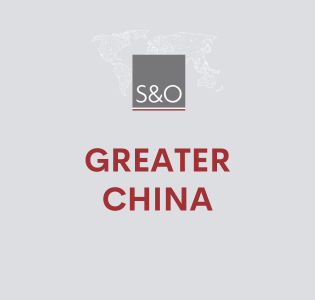INTRODUCTION OF AMENDMENTS TO CHINA TRADEMARK LAW
16 Oct 2023
China
share
On January 13, 2023, the China National Intellectual Property Administration (CNIPA) issued the Bill to revise the Trademark Law of the PRC, which officially launched the fifth amendment of Trademark Law. The number of articles in Trademark Law has increased from 73 to 101, of which only 27 articles in the existing Trademark Law have been retained, 5 have been substantially amended and 23 have been added.
Prohibition of repetitive application.
The same applicant cannot own two identical trademarks for the same goods or services. In addition, if the applicant’s registered trademark has been cancelled, the applicant can’t reapply for the same trademark for identical goods within one year. The main purpose of this amendment is to control the number of trademark applications.
Significant adjustments in Trademark Opposition Procedure.
Firstly, the period of publication for opposition is reduced from three months to two months. Secondly, there is no review procedure if a trademark is disapproved for registration upon opposition. The purpose of these amendments is to shorten the procedures. The shortened publication period requires the right holder to monitor the publication in a timelier manner and to decide whether to file an opposition.
Higher requirements for application .
Only trademarks that are used or undertaken to be used can be applied for registration. Thus, the intended use requirement is added. Applications for trademark registration that are not filed for the purpose of use are considered malicious applications that disrupt the order of trademark registration.
Declaration of use after registration.
The applicant must submit a declaration of use within 12 months every five years after the registration of the trademark. If the registrant doesn’t file a declaration of use within the time limit, the CNIPA may require a declaration within six months. If no statement is submitted, the registration will be cancelled. In addition, registrants may be given a warning and fined up to 100,000 RMB by the trademark administrative authority.
Consequently, while the prohibition of repetitive applications aims to reduce the number of trademark applications, the requirement for declaration of use is intended to reduce the number of registrations.
Introduction of compulsory transfer.
Under the circumstance of squatting trademarks, the right holder can request either the invalidation of the trademark or the transfer of the trademark to itself. However, the compulsory transfer applies only to registered trademarks and is not applicable in the opposition procedure.
Increase of administrative and civil liability for bad faith squatting.
The amendment raises the upper limit of the administrative fines for infringers in serious cases to 250,000 RMB and requires the confiscation of illegal income.
Also, the applicant with bad faith must pay civil compensation to the true right holder. Compensation may include the costs of filing opposition and invalidation, and lost profits.




